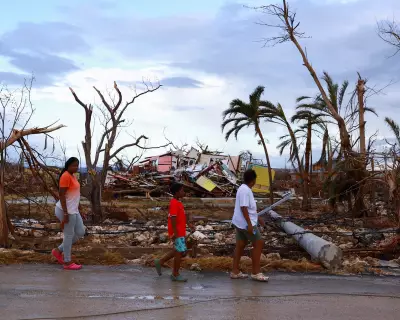
Websites created for United Nations climate change conferences emit up to ten times more carbon dioxide than typical internet pages, according to startling new research published as COP30 begins in Brazil.
Dramatic Increase in Digital Carbon Footprint
Analysis covering COP conferences from 1995 to 2024 reveals average emissions from host websites have skyrocketed by more than 13,000 per cent over three decades. This year's COP30 webpage is projected to emit approximately 313kg of CO2 – equivalent to the carbon absorption capacity of 15 mature trees working for an entire year.
Professor Melissa Terras from Edinburgh University explained their motivation: 'We chose first to look at the COP conferences themselves, given they are the focus of so much discussion on climate change. Our research shows that the carbon cost of digital presence is often overlooked by even those who care about, and are meant to protect, the environment.'
From Basic Pages to Media-Rich Experiences
The research team examined web archive data spanning 30 years of climate conferences, publishing their findings in PLOS Climate journal. Emissions remained relatively minimal until COP14 in 2008, with sites producing just 0.02g of carbon equivalent per page view.
However, from COP15 onward, emissions surged dramatically. Current COP pages now emit over 2.4g of carbon per visit on average, with some producing substantially more. This contrasts sharply with the average website's emission of just 0.36g per page view.
PhD student David Mahoney, who contributed to the study, noted: 'While AI rightly captures much of today's attention, websites remain the longest-standing and most widespread form of human-computer interaction, and one of the largest contributors to the internet's environmental impact.'
The Multimedia Problem and Solutions
Researchers attribute the significant carbon disparity to COP websites increasingly incorporating content demanding greater computing power, including high-resolution imagery and embedded videos. Last year's COP29 site in Baku featured moving video headers and interactive photographs, while COP28's Dubai page included three main videos and a sliding status report.
The most carbon-intensive conference website identified was COP25 in Madrid, described in the study as 'heavily media based…with some individual webpage links dynamically updating content.'
The research team proposes several practical solutions to reduce digital emissions, including:
- Implementing strict limits on webpage sizes
- Optimising website layouts for efficiency
- Hosting sites on servers powered by renewable energy
Mahoney emphasised: 'Our work shows how reusing web archives can expose this growing blind spot, even among organisations at the heart of climate discussions, and help identify practical ways to cut digital emissions.'





